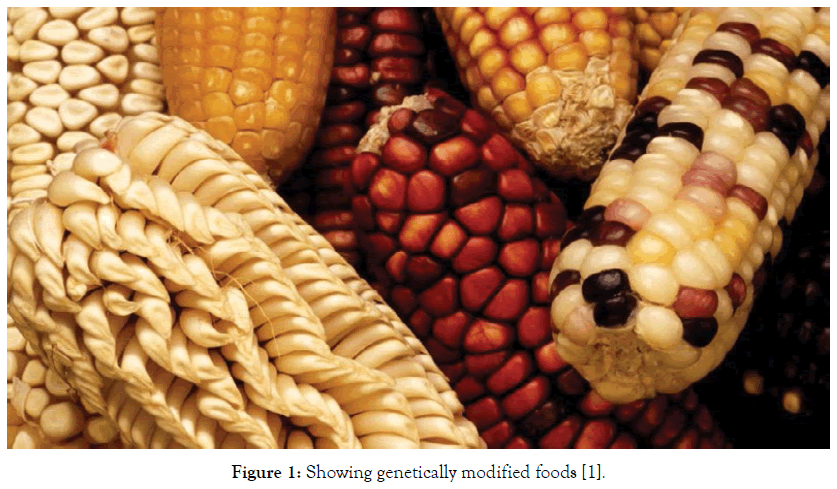Indexed In
- Genamics JournalSeek
- Academic Keys
- JournalTOCs
- China National Knowledge Infrastructure (CNKI)
- Access to Global Online Research in Agriculture (AGORA)
- Centre for Agriculture and Biosciences International (CABI)
- RefSeek
- Directory of Research Journal Indexing (DRJI)
- Hamdard University
- EBSCO A-Z
- OCLC- WorldCat
- Scholarsteer
- SWB online catalog
- Publons
- Euro Pub
- Google Scholar
Useful Links
Share This Page
Journal Flyer

Open Access Journals
- Agri and Aquaculture
- Biochemistry
- Bioinformatics & Systems Biology
- Business & Management
- Chemistry
- Clinical Sciences
- Engineering
- Food & Nutrition
- General Science
- Genetics & Molecular Biology
- Immunology & Microbiology
- Medical Sciences
- Neuroscience & Psychology
- Nursing & Health Care
- Pharmaceutical Sciences
Image Article - (2020) Volume 11, Issue 9
An Image Article on Genetically Modified Foods
Joseph Williamson*Received: 19-Sep-2020 Published: 02-Oct-2020, DOI: 10.35248/2157-7110.20.11.844
Description
Genetic Modification (GM) is the area of biotechnology which alters the genetic material in living organisms by inserting a gene from an external source, enabling them to perform specific functions. Genetic engineering gives a way to bring qualities into plants by means of systems that are diverse in certain regards from old style breeding techniques [2]. It has enhanced food production by making plants less vulnerable to drought, frost, insects, and viruses and by empowering plants to contend all the more adequately against weeds for soil nutrients [2]. One such use of genetic engineering in agriculture is the modification of corn to express insecticidal proteins produced by the common soil bacterium, Bacillus thuringiensis (Bt), which are effective against certain insect pests but are harmless to humans, mammals and birds [3]. However, they are also some debates concerning the potential adverse effects of GM foods on human health and environmental safety. Health risks include antibiotic resistance, allergic reactions, nutritional changes and the formation of toxins [4] (Figure 1).

Figure 1. Showing genetically modified foods [1].
REFERENCES
- OSCE supports roundtable discussion on regulating release and marketing of genetically modified organisms in Kazakhstan. Organisation for Security and co-operation in Europe. 2018. https://www.osce.org/programme-office-in-astana/403538.
- Verma C, Nanda S, Singh RK, Singh R, Mishra S. A review on impacts of genetically modified food on human health. Open Nutraceuticals J. 2011;4:3-11.
- Falk MC, Chassy BM, Harlander SK, Hoban IV TJ, McGloughlin MN, Akhlaghi AR. Food biotechnology: Benefits and concerns. J Nutri. 2002;132:1384-1390.
- Maghari BM, Ardekani AM. Genetically modified foods and social concerns. Avicenna J Med Biotechnol. 2011;3:109.
Citation: Williamson J (2020) An Image Article on Genetically Modified Foods. J Food Process Technol 11:844. doi: 10.35248/2157-7110.20.11.844.
Copyright: © 2020 Willliamson J. This is an open-access article distributed under the terms of the Creative Commons Attribution License, which permits unrestricted use, distribution, and reproduction in any medium, provided the original author and source are credited.


